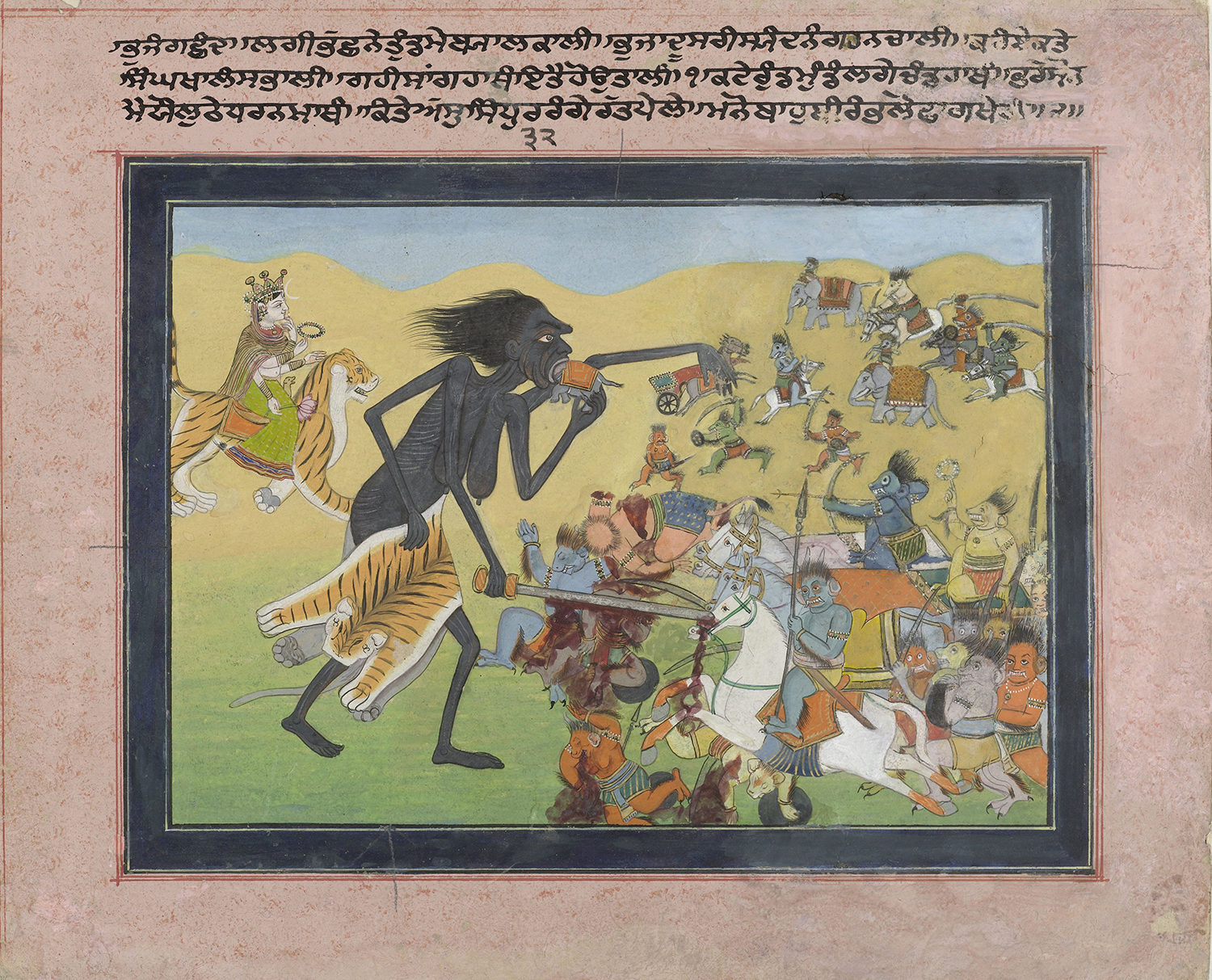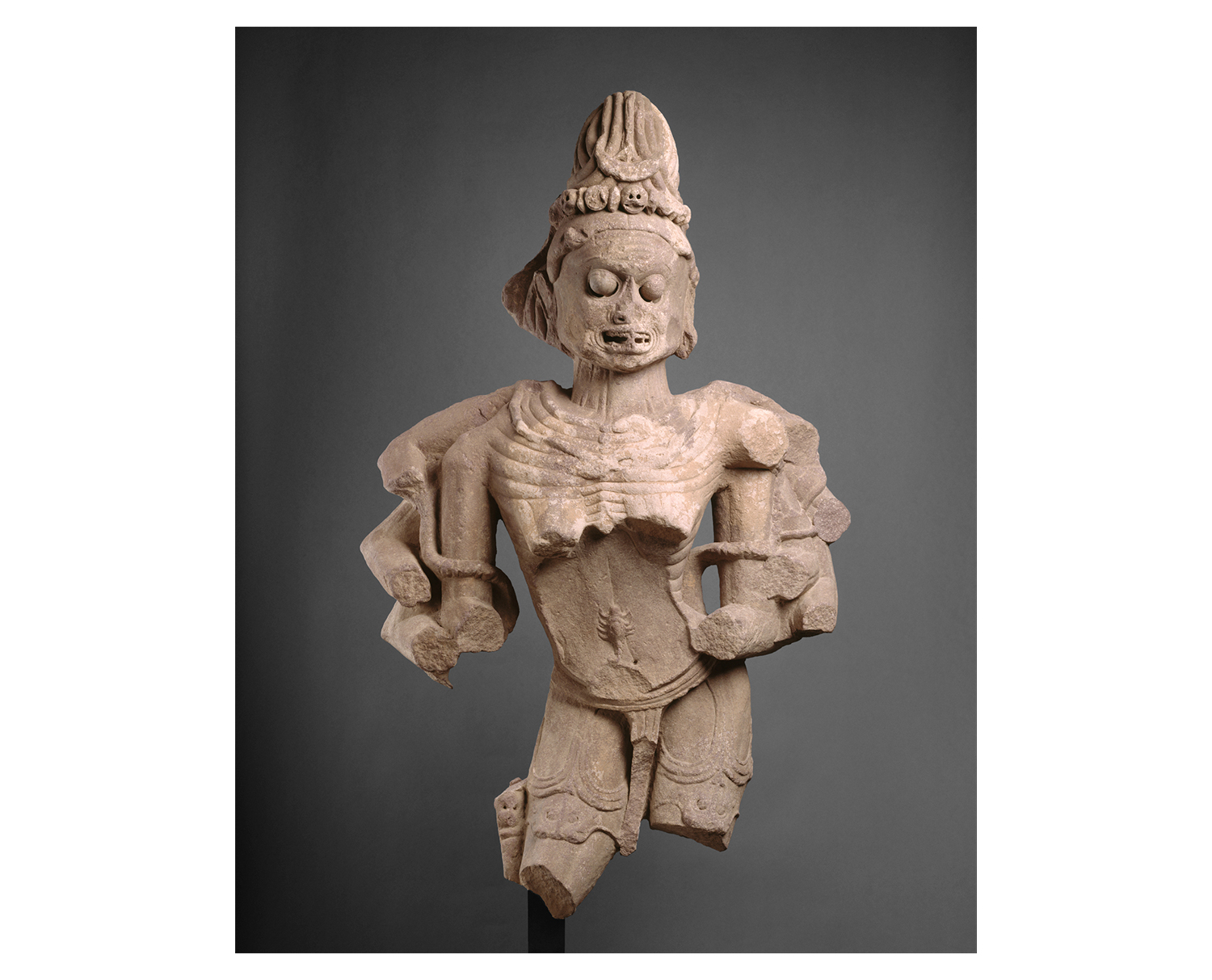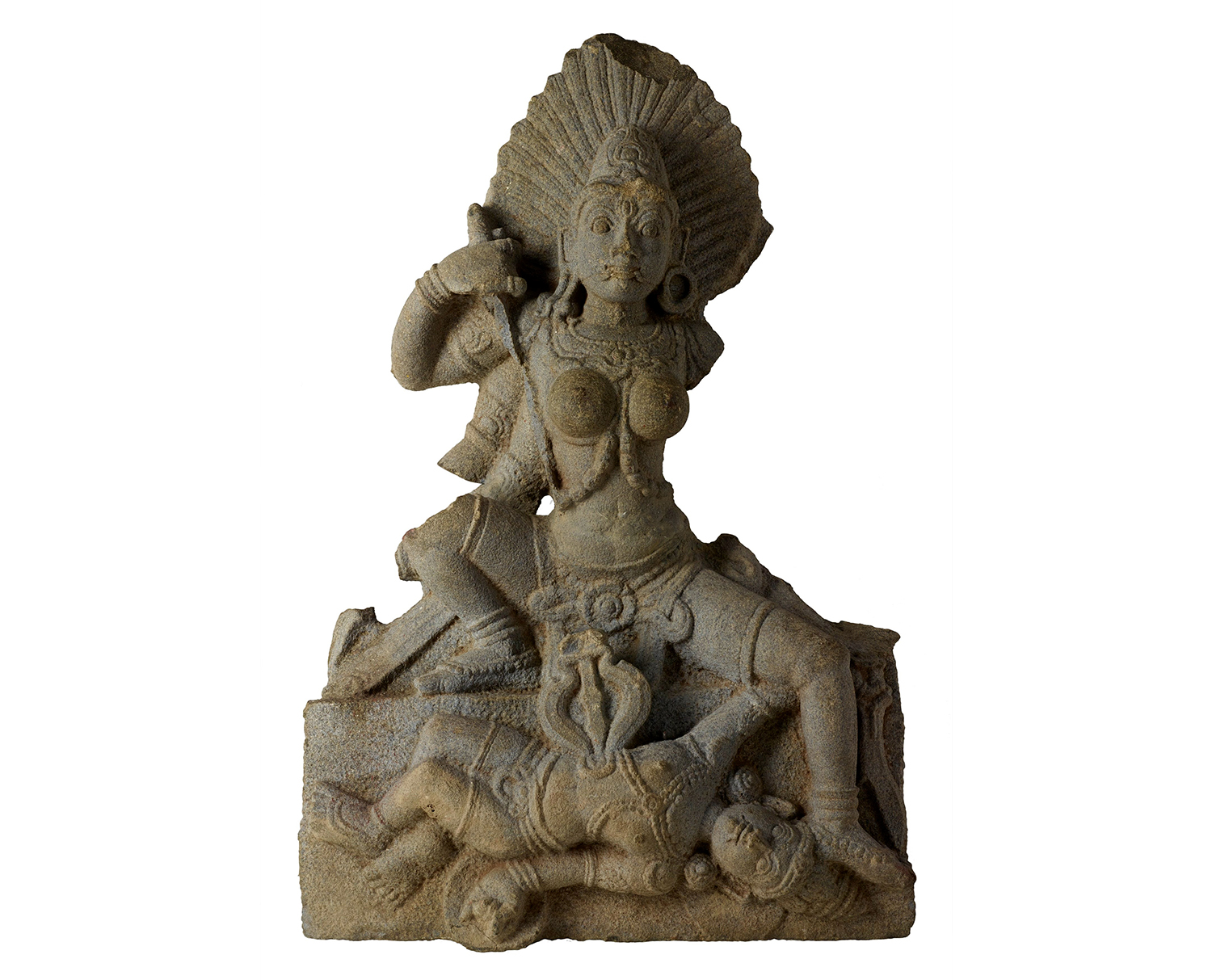ARTICLE
Chamunda
There are several temples and shrines dedicated solely to Chamunda, with the sixteenth-century Chamunda Devi Temple in Kangra, Himachal Pradesh being a notable one. Others include the Kichakeswari Temple and the Baitala Deula in Odisha; the Chamundeshwari Temple in Mysuru; the Chamunda Temple at the Mehrangarh Fort in Jodhpur; and two temples in Chotila and Panera, Gujarat. She also appears as a minor goddess on wall murals in several temples in Nepal dated to the fourteenth and fifteenth centuries.
Illustrations of Chamunda appear in illustrated folios of the Devi Mahatmya, in Mughal manuscripts and in Pahari and Rajput paintings, as well as in paintings from Nepal. She is often depicted eating corpses in battlegrounds, carrying a severed head or drinking the blood of demons.
Bibliography
Dallapiccola, Ann. Dictionary of Hindu Lore and Legend. London: Thames & Hudson (2002).
Elgood, Heather. Hinduism and the Religious Arts. London, New York: Cassell (1999).
Harveen Bhandari, “Sacred Landscape: A documentation of the Chamunda Devi Temple Complex, Himachal Pradesh.” Compiling Records, Vol 10, Issue 1 (2013).
Rushal Unkule, Gopal Joge and Veena Mushrif‐Tripathy, “Early Medieval Representation of Human Anatomy: A Case Study of Chamunda Stone Image from Dharamsala, Odisha.” Heritage: Journal of Multidisciplinary Studies in Archaeology (2017).
The Metropolitan Museum of Art. “Chamunda, the Horrific Destroyer of Evil.” Accessed January 20, 2023. https://www.metmuseum.org/art/collection/search/38152.












